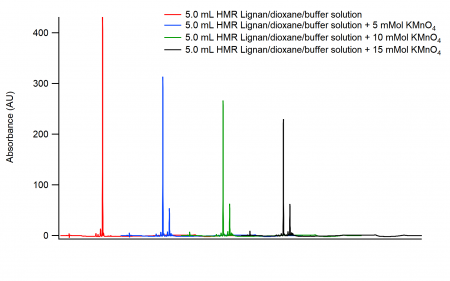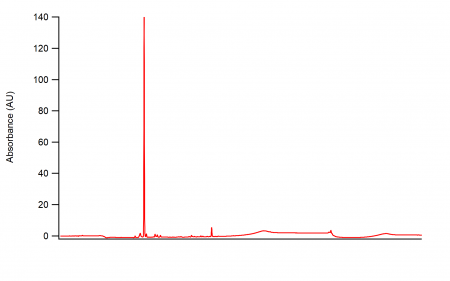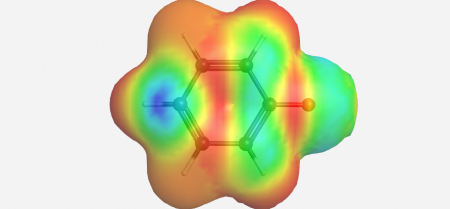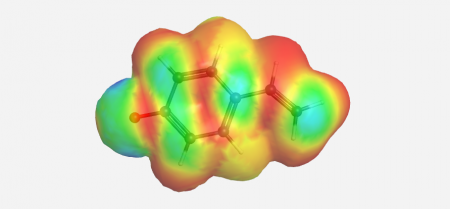Lignan Project
Abstract
Introduction
Lignin is an abundant, complex organic polymer that acts as one of the principle components of plants. Lignin plays a role in the structure of plant cell walls, works to move water through the plant to critical areas and helps to prevent water evaporation.[1] Lignins account for a large percentage of overall plant mass, at around 20-25%.[2] We know that lignin does not act alone in it’s structural duties, commonly forming complexes with polymeric carbohydrates.[3] Difficulty in isolating lignin from these lignin-carbohydrate complexes means that synthetic lignins are commonly used for research purposes. The basic monomers that make up the lignin polymer are p-coumaryl alcohol, coniferyl alcohol, and sinapyl alcohol. These three monomers are phenylpropane units that differ in their substitutions at the 3 and 5 positions.[4] In the case of lignin nomenclature, the side chain attachment to the aromatic ring is considered position C-1 and the phenol group considered to be position C-4. These monomeric alcohols undergo oxidative coupling with each other and with a growing polymer end unit.[5] This oxidation process results in radicals delocalized at positions C-1, C-3, C-5, C-β, and O-4.[6] The most frequently formed bonds are β-O-4 bonds.[7]
The coupling of two lignin monomers, usually at their β carbons, results in lignan, a nonstructural component of plants that play a role in plant defense.[8] These lignans show important biological activity that the lignin polymer does not.[9] One interesting medical application of lignan is found in its interactions with breast cancer. It has been shown that both flaxseed and sesame seed lignans and their metabolites have the potential to act as competitive inhibitors of estrogen and prevent the binding of estrogen to estrogen receptors on breast cancer tumors.[10][11]. These effects are possible on the basis that many lignans share structural features with the human estrogen estradiol, including hydrophobic benzene rings and alcohol groups that are capable of interaction with the binding site of the estrogen receptor.[12][13] Lignan also displays antioxidant properties, showing the ability to scavenge hydroxyl radicals.[14][15] Lignan’s medical applications make it an interesting topic for further study, but an issue lies within the commercial availability of lignan. Lignan itself is not commercially available except as an analytical standard, and analytical standards can range upwards of $300 USD for 10 mg of product. For an undergraduate research lab, this presents serious problems in terms of budget and funding. In order to study the chemistry of lignans, we need a way to isolate and purify lignans in a cost effective manner.
Experimental Methods
Materials
Lignans for Life Hydroxymatairesinol (HMR) Lignan was obtained from Amazon.com (Seattle, WA, USA) while ethanol, 1,4-Dioxane, pH 5 Phosphate-Citrate Buffer, and KMnO4 were obtained from Sigma Aldrich (St. Louis, MO, USA).
Lignan Purification
Solutions of 1 HMR Lignan capsule (0.169 g), 5 HMR Lignan capsules (0.785 g), and 100.0 mL of EtOH and 10 HMR Lignan capsules (1.629 g) and 100.0 mL of EtOH were prepared. These solutions were filtered and analyzed using an Agilent 1100 Series HPLC with a C18 column (4.16 x 100 mm length and 3.5 μm particle size) at absorbance wavelength of 270 nm and temperature of 28°C using an acetonitrile (ACN) and 0.1% TFA gradient for 30 minutes. The first 15 minutes were run at 100% 0.1% TFA, 15-25 minutes at 100% ACN, and 25-30 minutes at 100% 0.1% TFA.
Lignan Concentration
Solutions of 2 HMR Lignan capsules + 20.0 mL of 1,4-Dioxane and 4 HMR Lignan capsules + 40.0 mL of 1,4-Dioxane were prepared. These solutions were filtered and analyzed using an Agilent 1100 Series HPLC with a C18 column (4.16 x 100 mm length and 3.5 μm particle size) at absorbance wavelength of 270 nm and temperature of 28°C using an acetonitrile (ACN) and 0.1% TFA gradient for 30 minutes. The first 15 minutes were run at 100% 0.1% TFA, 15-25 minutes at 100% ACN, and 25-30 minutes at 100% 0.1% TFA.
The solution of 4 HMR Lignan capsules in 40 mL of 1,4-Dioxane was used to fill ten 1.5 mL Eppendorf tubes with 1.0 mL of solution. These Eppendorf tubes were placed in a Savant Speedvac SC110 Concentrator (Holbrook, NY, USA) and spun overnight to remove the solvent. The pelleted solute in each Eppendorf tube was then resolubilized using 1.0 mL of EtOH.
The Lignan concentrate (10 μL) in 1.0 mL of H2O was ran on an Agilent 1100 Series HPLC with a C18 column (4.16 x 100 mm length and 3.5 μm particle size) at absorbance wavelength of 270 nm and temperature of 28°C using an acetonitrile (ACN) and 0.1% TFA gradient for 30 minutes. The first 15 minutes were run at 100% 0.1% TFA, 15-25 minutes at 100% ACN, and 25-30 minutes at 100% 0.1% TFA.
Lignan Degradation
A solution of 10 HMR Lignan capsules in 100.0 mL of 1,4-Dioxane solution was prepared. This HMR Lignan/dioxane solution (25.0 mL) was added to 25.0 mL of pH 5 Phosphate-Citrate buffer.
A solution of 0.0395 g of KMnO4 and 1000 μL H2O was prepared.
The following solutions were analyzed on an Agilent 1100 HPLC with a C18 column (4.16 x 100 mm length and 3.5 μm particle size) at absorbance wavelength of 270 nm and temperature of 28°C using an acetonitrile (ACN) and 0.1% TFA gradient for 30 minutes. The first 15 minutes were run at 100% 0.1% TFA, 15-25 minutes at 100% ACN, and 25-30 minutes at 100% 0.1% TFA:
- 5.0 mL of the HMR Lignan/dioxane/buffer solution
- 5.0 mL of the HMR Lignan/dioxane/buffer solution + 5 mMol KMnO4
- 5.0 mL of the HMR Lignan/dioxane/buffer solution + 10 mMol KMnO4
- 5.0 mL of the HMR Lignan/dioxane/buffer solution + 15 mMol KMnO4
Electron Density Analysis of Lignin Monomer-Like Molecules
Geometry Optimization and Molecular Orbital calculations were performed on Phenoxyl and 5-Vinylphenoxyl in WebMO using the B3YLP theory, accurate: 6-311+G(2d,p) basis set, and a density=current keyword. Hyperfine coupling constants were enteres into WinSim in order to predict EPR Spectra
Results
Lignan Purification

Lignan Concentration
Lignan Degradation

Electron Density Analysis of Lignin Monomer-Like Molecules
Hyperfine Coupling Constants
| Phenoxy | 4-Vinylphenoxy |
|---|---|
| 2.65 | 2.33 |
| 2.65 | 2.5 |
| 6.86 | 2.7 |
| 6.68 | 5.35 |
| 9.12 | 6.24 |
| 6.72 | |
| 7.17 |
Discussion
Conclusion
References
- ↑ Dimmel, D. (2010). Overview. Lignin and Lignans Advances in Chemistry. Taylor & Francis Group.
- ↑ Lewis, N. G., Davin, L. B., & Sarkanen, S. (1998) Lignan and Lignan Biosynthesis: Distinctions and Reconciliations. American Chemical Society Symposium Series, 1-27.
- ↑ Dimmel, D. (2010). Overview. Lignin and Lignans Advances in Chemistry. Taylor & Francis Group.
- ↑ Dimmel, D. (2010). Overview. Lignin and Lignans Advances in Chemistry. Taylor & Francis Group.
- ↑ Dimmel, D. (2010). Overview. Lignin and Lignans Advances in Chemistry. Taylor & Francis Group.
- ↑ Dimmel, D. (2010). Overview. Lignin and Lignans Advances in Chemistry. Taylor & Francis Group.
- ↑ Dimmel, D. (2010). Overview. Lignin and Lignans Advances in Chemistry. Taylor & Francis Group.
- ↑ Lewis, N. G., Davin, L. B., & Sarkanen, S. (1998) Lignan and Lignan Biosynthesis: Distinctions and Reconciliations. American Chemical Society Symposium Series, 1-27.
- ↑ Lewis, N. G., Davin, L. B., & Sarkanen, S. (1998) Lignan and Lignan Biosynthesis: Distinctions and Reconciliations. American Chemical Society Symposium Series, 1-27.
- ↑ Rodríguez-García et al. (2019). Naturally Lignan-Rich Foods: A Dietary Tool for Health Promotion. Molecules, 24(917), 1-25.
- ↑ Pianjing, P., Thiantanawat, A., Rangkadilok, N., Watcharasit, P., Mahidol, C., Satayavivad, J. (2001) Journal of Agricultural and Food Chemistry, 59, 212–221
- ↑ Pianjing, P., Thiantanawat, A., Rangkadilok, N., Watcharasit, P., Mahidol, C., Satayavivad, J. (2001) Journal of Agricultural and Food Chemistry, 59, 212–221
- ↑ Brzozowski, A. M., Pike, A. C., Dauter, Z., Hubbard, R. E., Bonn, T., Engström, O., Ohman, L., Greene, G. L., Gustafsson, J. A., Carlquist, M. (1997). Molecular basis of agonism and antagonism in the oestrogen receptor. Nature 389 (6652), 753–758.
- ↑ Rodríguez-García et al. (2019). Naturally Lignan-Rich Foods: A Dietary Tool for Health Promotion. Molecules, 24(917), 1-25.
- ↑ Touré A., Xu X. (2010). Flaxseed Lignans: Source, Biosynthesis, Metabolism, Antioxidant Activity, Bio-Active Components, Health Benefits. Comprehensive Reviews in Food Science and Food Safety 9:261–269.










